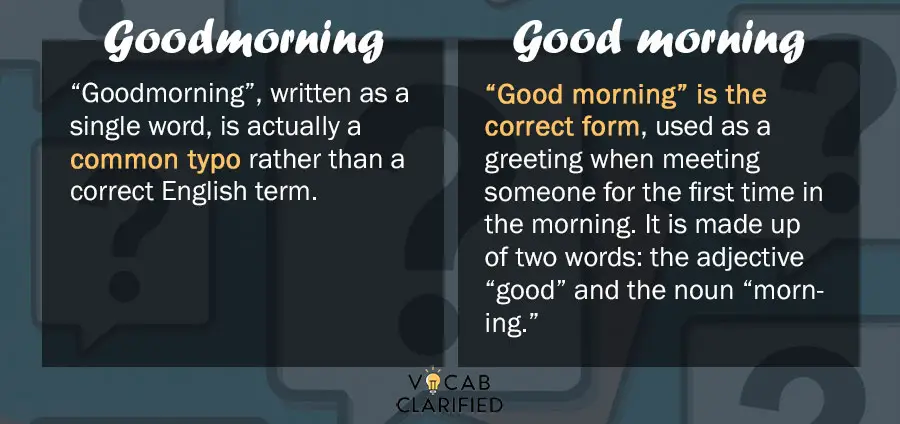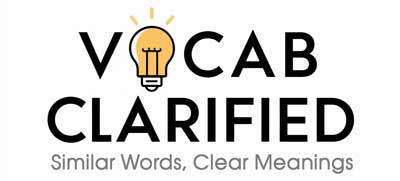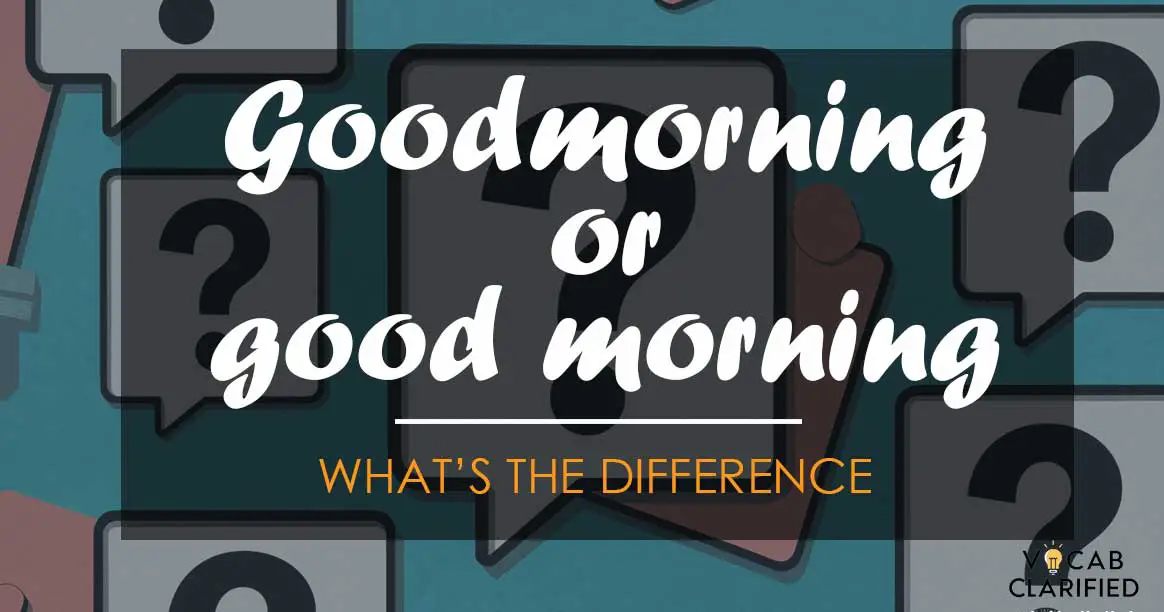Have you ever typed “goodmorning” in a rush, only to wonder if it’s missing a space? You’re not alone! This article clears up the confusion around this common morning greeting.
Understanding Goodmorning and Good Morning
Good Morning: Definition and Usage
“Good morning” is the correct form, used as a greeting when meeting someone for the first time in the morning. It is made up of two words: the adjective “good” and the noun “morning.”
For example:
- “Good morning, how did you sleep?”
- “She smiled and said, ‘Good morning!’ before pouring her coffee.”
Goodmorning: Definition and Usage
“Goodmorning,” written as a single word, is actually a common typo rather than a correct English term. It might be used mistakenly when people are in a hurry or not paying attention to spacing. However, it is not recognized as correct in standard English usage.

Side-by-Side Comparison
To further clarify the differences and help you decide which to use, here is a side-by-side comparison:
| Aspect | Good Morning | Goodmorning |
| Definition | A polite greeting used during the morning time. | Common misspelling of the greeting “good morning.” |
| Common Usage | “Good morning, everyone! Ready for the meeting?” | Incorrect usage, typically seen in rushed texts or typos. |
| Key Differences | Correct, standard English greeting. | Not recognized as a standard English term. |
Using “Good Morning“ In Everyday Language
Let’s see some examples to illustrate how “Good Morning” fits into everyday language:
Formal:
- Greeting colleagues: “Good morning, everyone! How was your weekend?”
- Addressing a customer: “Good morning, sir/madam. Can I help you with anything today?”
- Starting a meeting: “Good morning, team. Thank you for joining me today.”
Informal:
- Greeting a friend or family member: “Good morning, sunshine! Have a great day.”
- Saying hello to a neighbor: “Good morning! Beautiful day, isn’t it?”
- Replying to a text message: “Good morning! Just woke up, what’s going on?”
Additionally:
- Leaving a voicemail: “Good morning, Sarah. I’m calling to…”
- Responding to an email: “Good morning, John. Thanks for your email. I’ll get back to you by…”
- Greeting someone online: “Good morning everyone! Happy to be here today.” (on a forum or online community)
FAQ: Goodmorning vs. Good Morning
The correct way to greet someone in the morning is by saying “Good morning” with a space between “good” and “morning”. This is the proper English greeting used worldwide.
No, “goodmorning” as one word is incorrect in English. The correct form is two separate words: “Good morning.”
It’s best to use “Good morning” even in texts or emails to maintain proper grammar and politeness. Using the correct form shows attention to detail and respect.
“Good morning” is written as two words because it combines an adjective (“good”) with a noun (“morning”). In English, such phrases are typically written as separate words.
While most people will understand what you mean if you accidentally type “goodmorning,” it’s important to use the correct form “Good morning” to ensure clear and correct communication.
No, there are no standard English contexts where “goodmorning” as one word is considered correct. Always use “Good morning.”
A simple trick is to remember that both “good” and “morning” are strong, stand-alone words. They work together to create a greeting, so they should be written separately.
While the concept of a morning greeting exists in all languages, the exact translation and spelling will vary. However, in English, the correct form is always “Good morning.”
Bonus Tip
While the concept of a morning greeting exists in many languages, the exact translation and spelling will differ. In English, however, “Good morning” is always the way to go!
Conclusion
Although some people would say that it doesn’t matter whether you use Goodmorning or Good morning, we need to say that using “Good morning” shows attention to detail and respect. It sets a positive tone for your communication, no matter the situation.
Remember, starting the day with the right greeting can set a positive tone for the rest of the day. Keep this guide in mind, and may all your mornings be good and grammatically correct!

